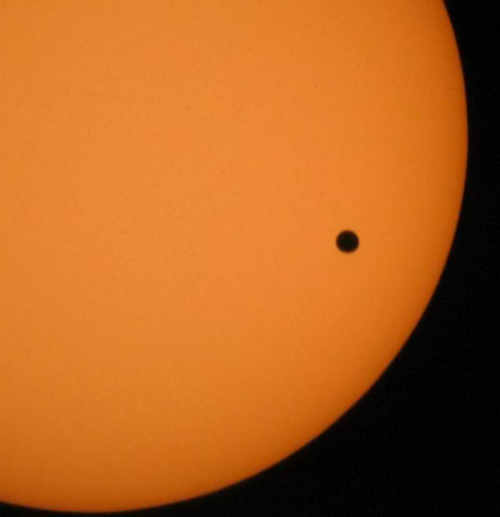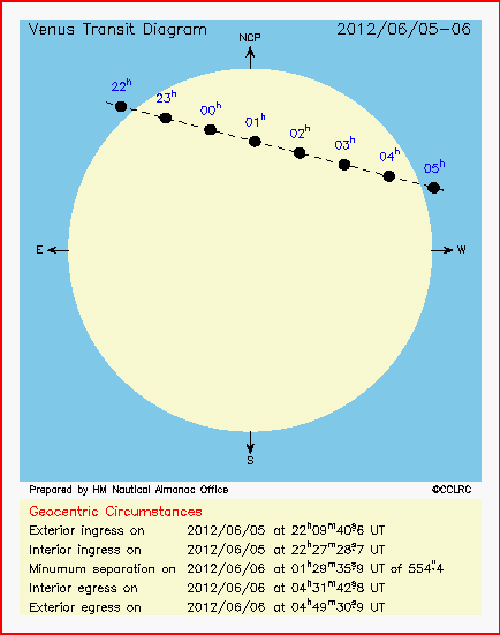“A black, round spot-and that is all;
And such a speck our earth would be
If he who looks upon the stars
Through the red atmosphere of Mars
Could see our little creeping ball
Across the disk of crimson crawl
As our sister planet see.”
-Excerpt from the Flaneur, Boston Common, December 6Th,1882
By Oliver Wendell Holmes, Sr.
The evening of June 5th 2012 will be a sight that no person alive today will get to witness again. It is one of the rarest sights we will ever witness, Not since 2004 has the planet Venus crossed the face of our closest star the sun, and not again until the year 2117 will it again be witnessed by the people of earth.
As Venus moves from becoming the evening star to becoming our morning star it will cross the face of the Sun and make first contact within 2 minutes of “22:05 universal time. 5:05 CDT or if living on coastal time “ when the sun reaches the horizon and reaches the top of a fish hook held at arms length.”
The transit of Venus has always been important to science.Scientists use the transit of Venus to calculate the “Principal of Parallax” (parallax- is the displacement or difference in the apparent position of an object viewed along two different lines of sight.
In 1663 a Scottish mathematician James Gregory had the idea of solar parallax of Venus and Mercury to help prove the celestial distances A.U. (astronomical unit)
The transit of Venus was so important that in 1769 the British Royal Society ordered Capt. James Cook aboard HMS Endeavor with other scientist to Tahiti to observe and calculate the Venus transit. The British Admiralty was not thrilled will the idea at the time but did agree and ordered a secret mission to find the unknown land of the south to follow.
The French government realizing the importance of the transit of Venus sent orders: “All Men Of War.” DETAIN NOT! and BRING NO HARM! to British Bark “Endeavor.” “ As it was out on enterprises that were of service to all mankind”
The transit of Venus is the rarest of predicable astronomical phenomena; they occur in a pattern every 243 years With pairs of transits every 121 years and 105 years.
The transit will last approximately six hours and 30 minutes, but here in Texas will be cut short by sunset. It will blacken only 3% of the sun, but may be seen with the naked eye using appropriate eye ware. (#14 welders lens can be bought for an average price of 3 to 5 dollars from any welding shop and there are countless websites were observing goggles can be purchased very reasonably.)
I bought two welders lenses for my binoculars because I like to observe the sun spots anyway. And they work nicely for observing sun activities, transits and eclipses. But always use a safe solar filter when observing the sun; the damage the sun can do to your retinas may be permanent.
Venus has been called our sister planet as it is almost the same size as earth. It is the second planet from the sun and named after the Roman goddess of love and beauty. But Venus is far from love and beauty.
Long ago it was theorized that Venus had an atmosphere and must have life. Today, of course, we know that Venus has an atmosphere of acid and extreme heat; the pressure that would crush any life attempting to land. Its gravity is 92 times that of earth. If you weigh 200 pounds you would weigh 18,400 pounds on Venus – a reminder of how beautiful our planet really is.
Crossroads Astronomy Club meets every third Monday at 7:00 p.m. at the University of Houston at Victoria, Room 223, West building. Call 361-648-0089 for more information.


